

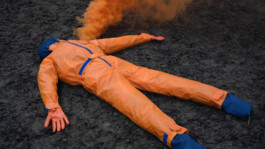

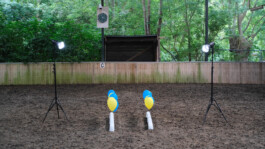
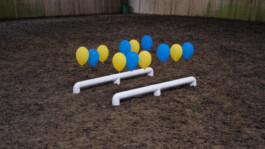
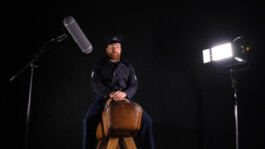
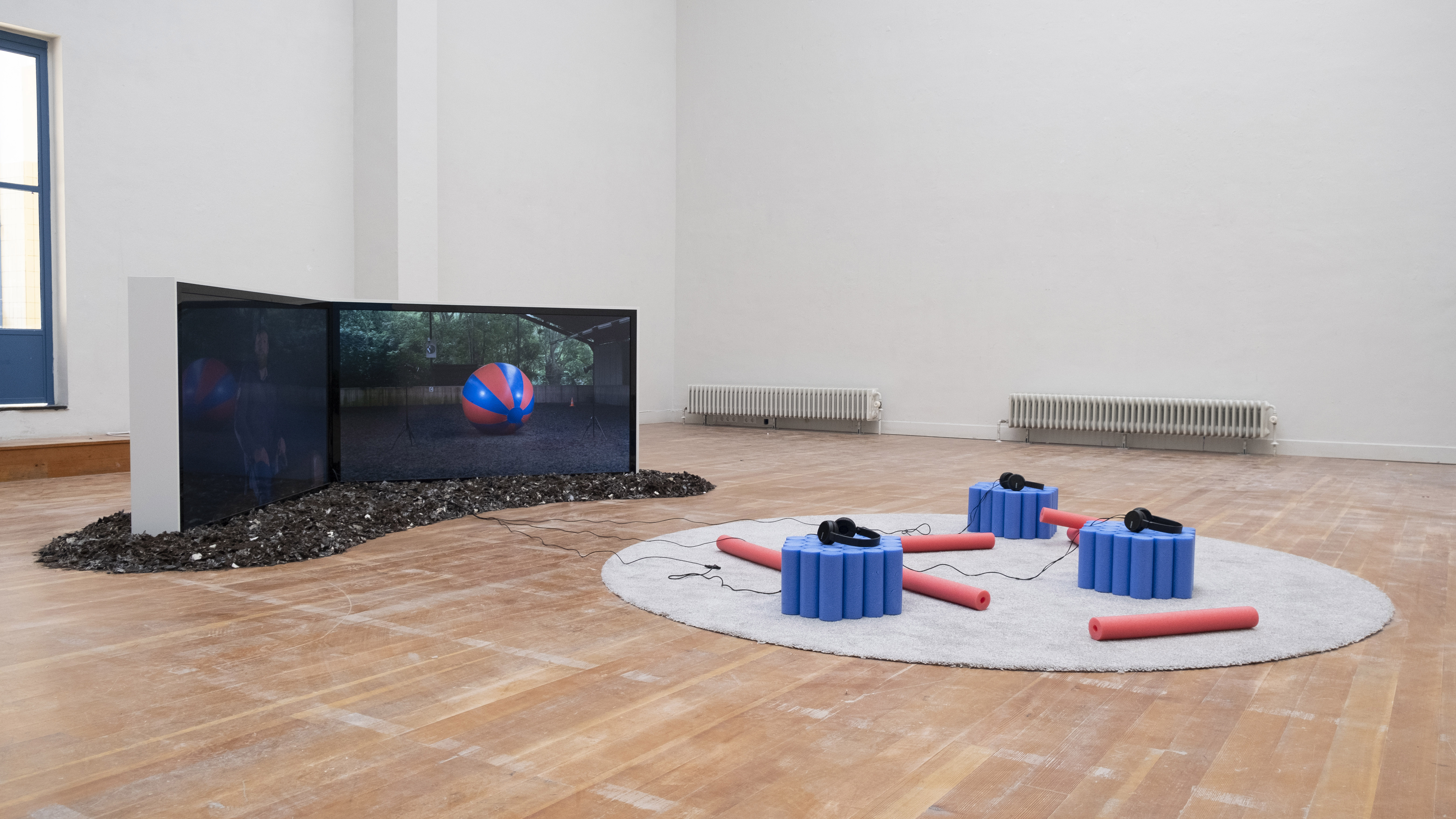
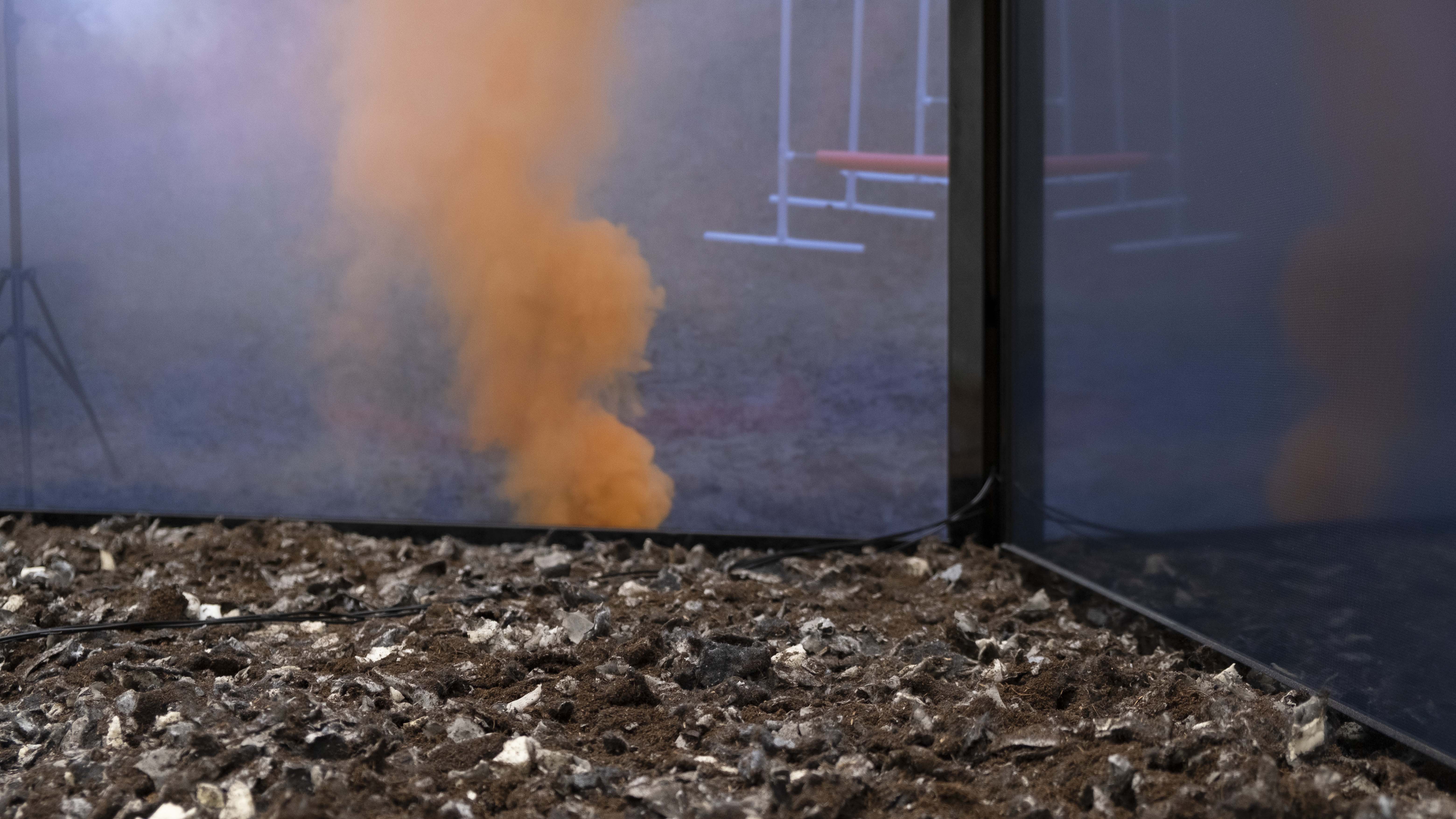
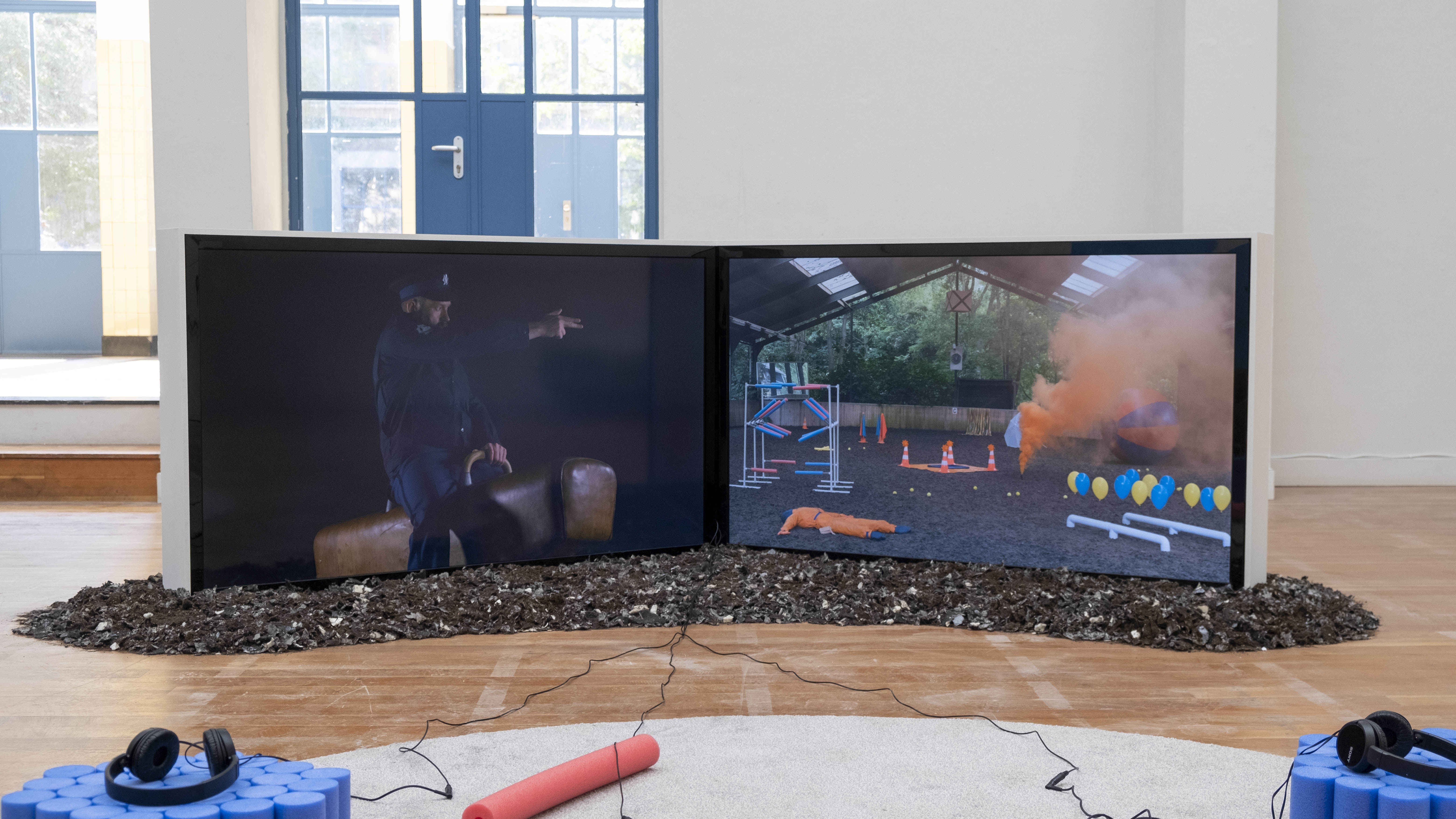
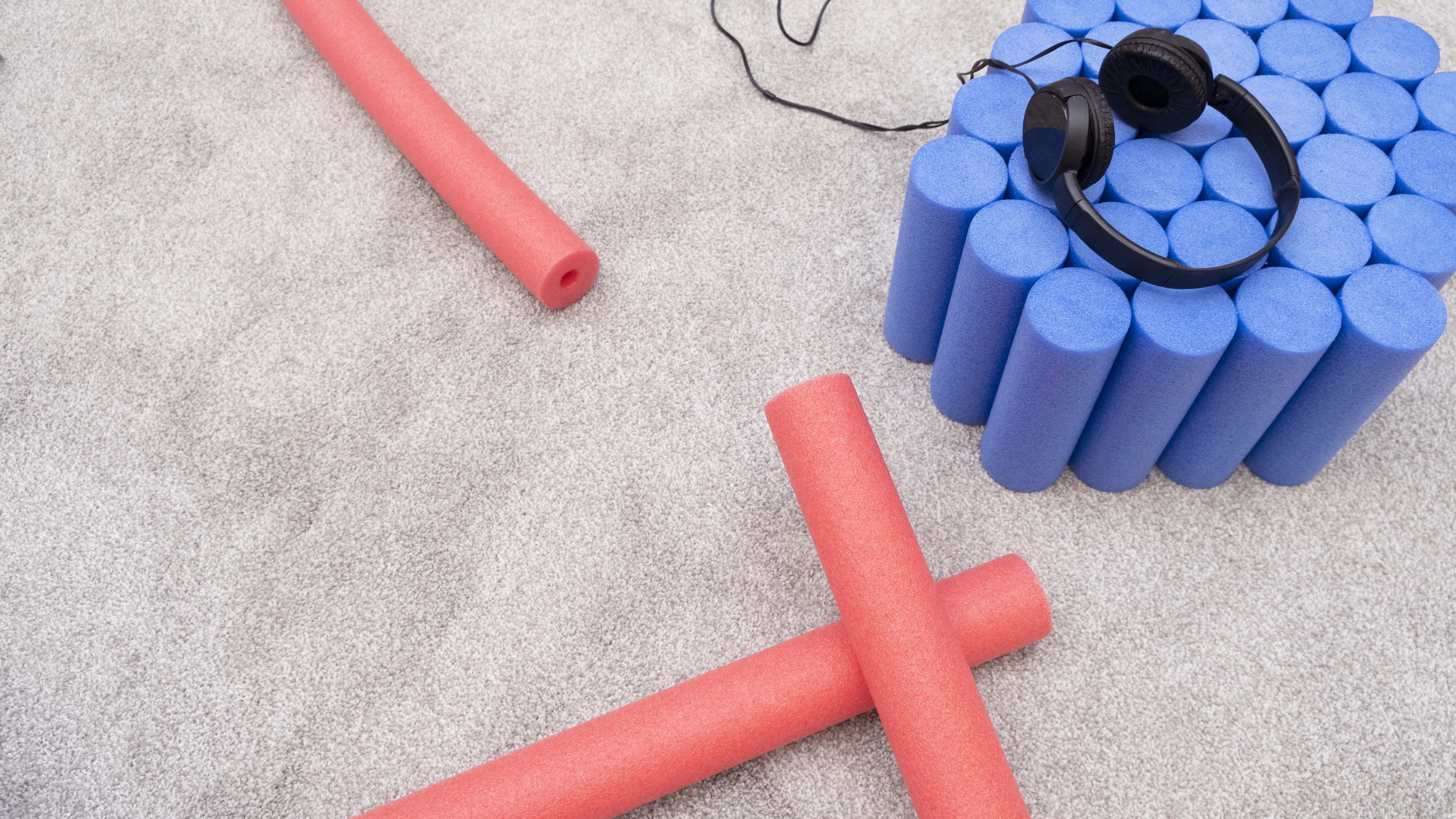
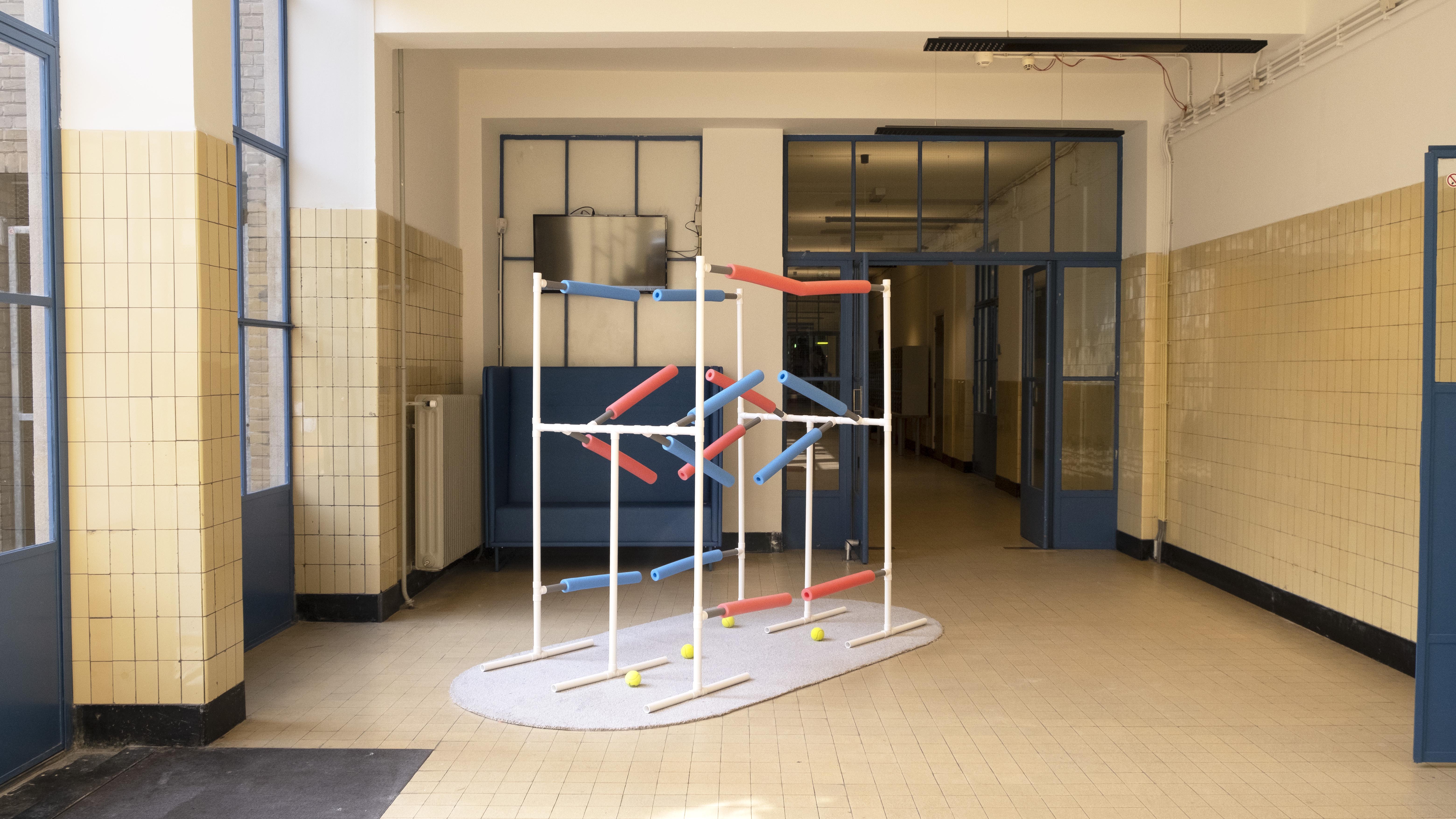
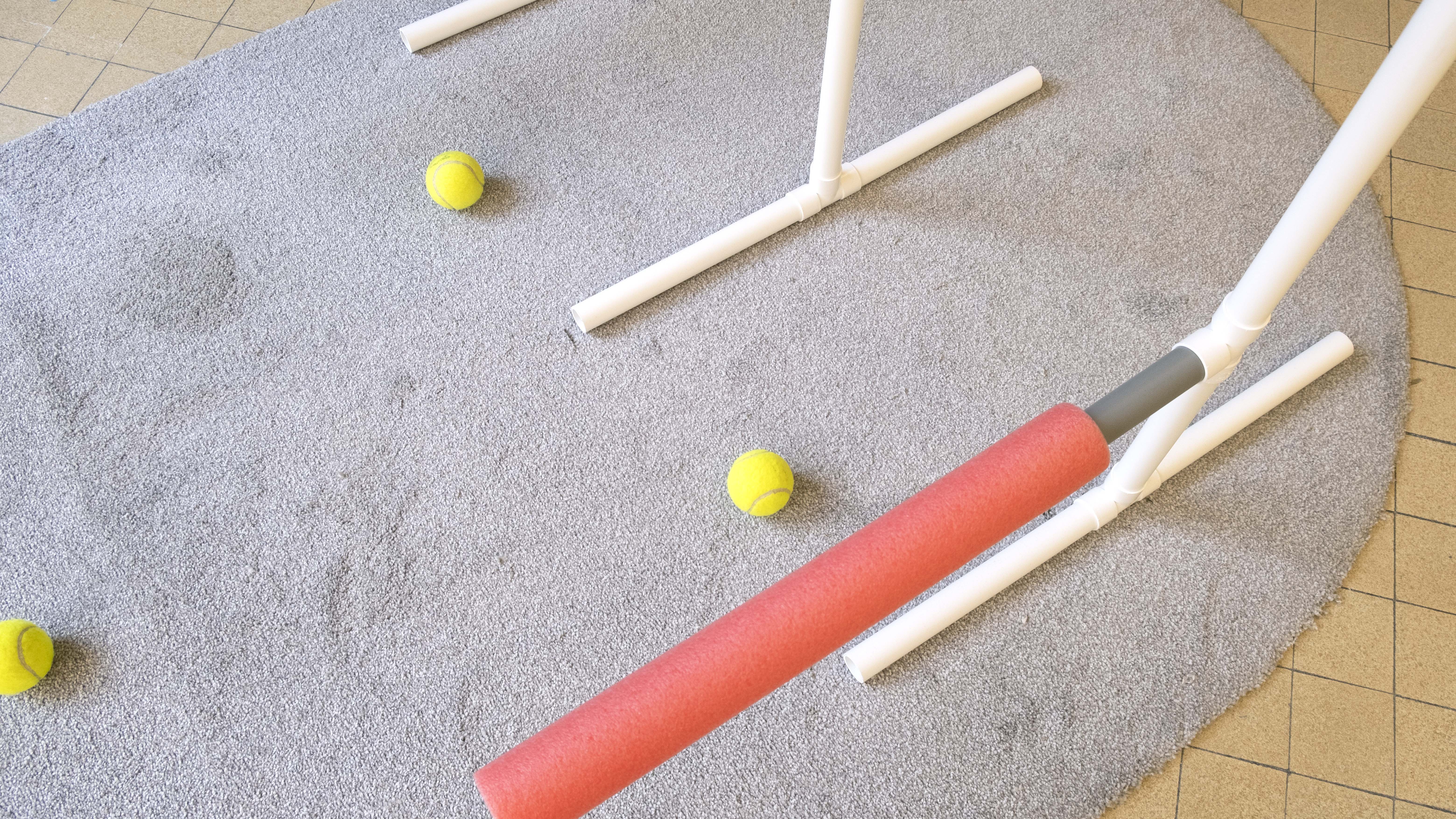
↑
A horse is a horse of course, of course — 2020
Focusing on the self-narration and visual language of the mounted police, ‘A horse is a horse of course, of course’ reflects on how police horses are treated as just another of the many apparatuses police use for the maintenance of social control systems and their legitimation. While undergoing a special domestication process aimed at suppressing their instinctive flight responses to fear, horses become a means to impose a disciplinary power in return.
The re-enactment aims to critically deconstruct the ambiguity and the fiction inherent to the depiction of the horses as a more “efficient” but yet “humane” and “natural” tool to provide security and civilisation. This ambiguity comes back in the mundane objects used for horses' trainings. While being extracted from playful contexts, their purpose is to simulate the situations of violence that horses will face in their policing duties.
The two-channel video invites to question the distorted mainstream cultural definition of policing. To start engaging with an abolitionist practice also requires to radically decode and refuse the over simplifying language that police speak.
2-channel video, sound, 5 min
actor Joerie Widdershoven
camera assistants Adele Dipasquale, Valentino Russo
sound design Cristina Lavosi, Valentino Russo
costumes Hoppezak Kledingverhuur, Leiden
Exhibition view at The Royal Academy of Art (KABK), The Hague. MA Degree show On Our Own Time, curated by Agata Jaworska and Ina Hollmann
This video is winner of the Master Department Award 2020 at KABK, The Hague













A horse is a horse of course, of course — 2020
Focusing on the self-narration and visual language of the mounted police, ‘A horse is a horse of course, of course’ reflects on how police horses are treated as just another of the many apparatuses police use for the maintenance of social control systems and their legitimation. While undergoing a special domestication process aimed at suppressing their instinctive flight responses to fear, horses become a means to impose a disciplinary power in return.
The re-enactment aims to critically deconstruct the ambiguity and the fiction inherent to the depiction of the horses as a more “efficient” but yet “humane” and “natural” tool to provide security and civilisation. This ambiguity comes back in the mundane objects used for horses' trainings. While being extracted from playful contexts, their purpose is to simulate the situations of violence that horses will face in their policing duties.
The two-channel video invites to question the distorted mainstream cultural definition of policing. To start engaging with an abolitionist practice also requires to radically decode and refuse the over simplifying language that police speak.
2-channel video, sound, 5 min
actor Joerie Widdershoven
camera assistants Adele Dipasquale, Valentino Russo
sound design Cristina Lavosi, Valentino Russo
costumes Hoppezak Kledingverhuur, Leiden
Exhibition view at The Royal Academy of Art (KABK), The Hague. MA Degree show On Our Own Time, curated by Agata Jaworska and Ina Hollmann
This video is winner of the Master Department Award 2020 at KABK, The Hague
↑